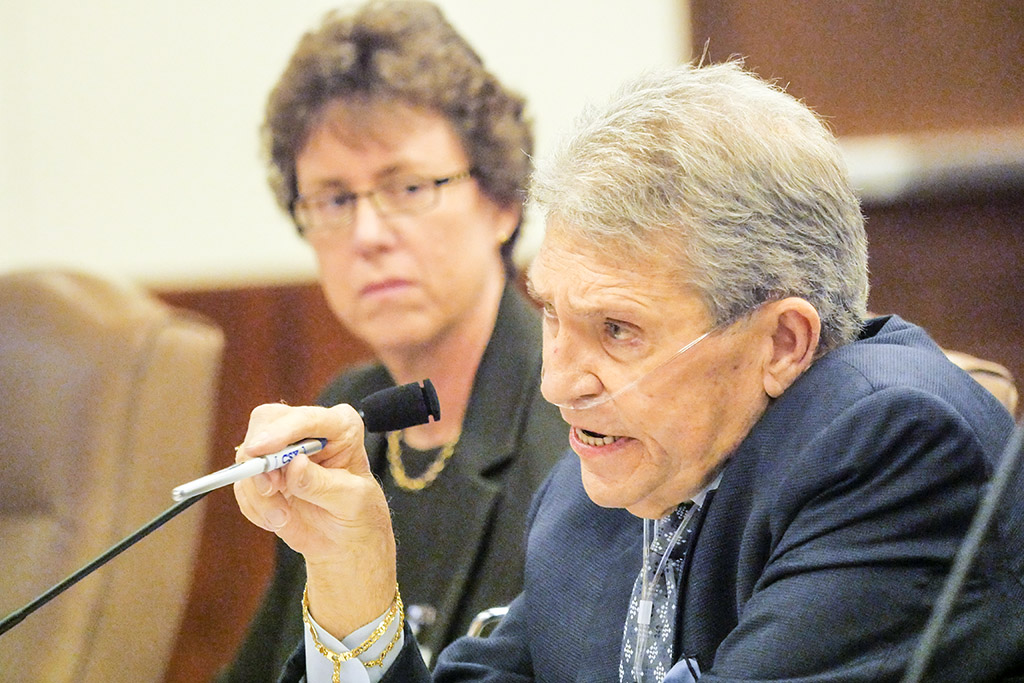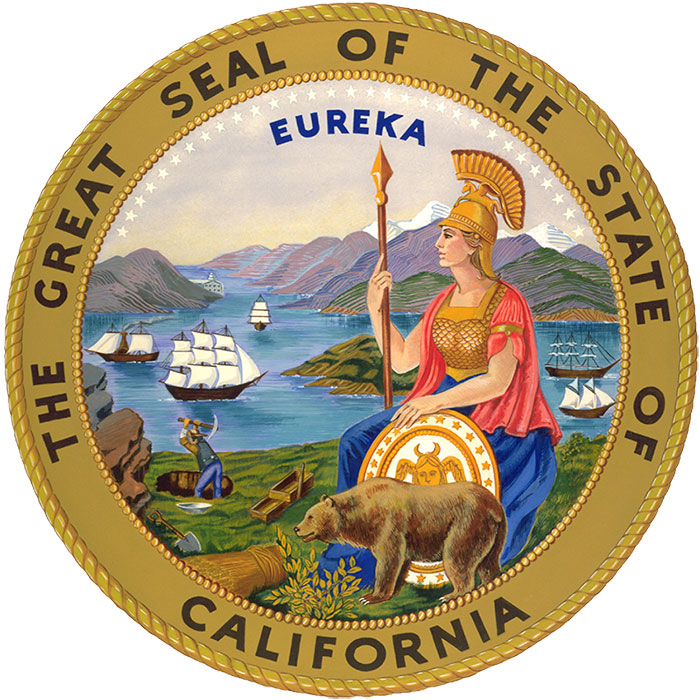“Our intermodal network needs a ton of work in order to become the efficient part of our system that it needs to be and we’re just really beginning to get in there and start to figure out how to rationalize that big part of our business,” CEO Jim Foote said on the railroad’s quarterly earnings call on Tuesday.
CSX is in the early stages of analyzing what Foote called a “dysfunctional” and inefficient intermodal network. The effort will involve changes to train design and terminal operations, and possibly terminal consolidations.
Unlike last summer, when former CEO E. Hunter Harrison made rapid and sweeping operational changes that created major service problems, CSX will take a go-slow approach to the intermodal redesign.
“We’re not going to do anything that’s going to screw up the railroad,” Foote says. “So if it takes a little longer than a quarter or two, I’m fine with that.”
Last fall CSX shed 7 percent of its intermodal volume as it dropped or scaled back service between low-volume intermodal terminals while shifting some intermodal traffic into the merchandise network. The hub-and-spoke strategy added cost and transit time to traffic that’s both low margin and service sensitive.
To serve the lower-volume markets, CSX had relied on its container-sorting hub at North Baltimore, Ohio, which touched more than a quarter of all CSX intermodal shipments before Harrison arrived. The terminal has been repurposed to serve local markets and as a block-swapping facility.
“At that point in time, it was my belief that a large part of that rationalization of intermodal had been accomplished,” Foote says. “Well, that’s not the case.”
Foote, who served as chief marketing officer at Canadian National while Harrison was CEO in Montreal, noted that a similar intermodal revamp was undertaken at CN.
“Intermodal at CN was a basket case,” Foote says. “When we were done fixing it over a couple year period, the average profitability of our intermodal business there was better than the corporate average.”
Intermodal at CSX is a different beast, however, with much shorter hauls than what CN enjoys.
Foote promised open communications with customers about pending changes — something that shippers and federal regulators said was lacking amid Harrison’s blitzkrieg of change last year.
With truck capacity tight and truck rates soaring to record levels, Foote says it’s a good time to be in the intermodal business.
“People are looking for capacity,” Foote says. “We want to be able to provide that service and capacity to our customers.”
CSX does not envision buying additional containers for the UMAX container pool jointly operated with Union Pacific. Both railroads have been scaling back their capital expenses.















I believe CSX has a customer service office in Tacoma,WA shared with BNSF
Kip, when you refer to “CP and the Indiana Rail Road” are you referring to the intermodal originating at Senate Avenue Yard in Indianapolis? If so, that is interchanged to CN, not CP.
Mr. McFarlane:
“…though I don’t know if they have their own dedicated stack trains anymore like they did when I was in logistics.” That’s exactly my point. Thank you for clarifying.
And no issue regarding CSX container business – I’ve visited Hong Kong many a time, with pride at seeing CSX containers stacked and ready to ship. My issue is with that old “hand-off” between Class 1’s which, as any Logistician knows, hurts efficiency. Just like the “dump the hump” policy, the fewer times product is “handled” in transit, the better/more efficient your operation is. That’s what CSX has to grapple with – as does NS – to become leaders of the Class 1 pack for CONUS containers.
Subjectively, the Canadian Class 1’s have us at a disadvantage right now (new BC port), non-stop coast-to-coast network (figuratively for CP). If BNSF/CN would have occurred, a decades worth or more of rationalization would have North America rails best positioned in world-class, coast to coast, to coast (GOM) network. Ah, to dream of what could of been, and how opportunity’s been squandered… by Government regulation.
“We’re not going to do anything that’s going to screw up the railroad,”
Just a tad late with that statement, Mr. Foote. The barn door was left wide open.
Kip,
Sounds like you know nothing about CSX Intermodal…which sells coast to coast intermodal services via the CSX Intermodal network that spans from New York to the West Coast. Just how do you think those CSX Intermodal containers get out on the West Coast anyways, though I don’t know if they have their own dedicated stack trains anymore like they did when I was in logistics. CSX Intermodal is still a coast to coast network, and they can even offer door to door service from coast to coast…so there’s no need to merge or “code-share” as you call it, they just need marketing people and someone smart enough to realize they are running a railroad, not an investment income breadwinner.
Not quite 200 years into the rail industry and not much had changed. Employees still operate trains on rails and maintain infrastructure. Modern upgrades grudgingly come as a result of “improving the return to investors” or federally-mandated rules. That gets us to railroad management who manage in a bubble of their own thoughts and ideas, far flung from the needs of their markets. Well, sometimes they DO listen to customers’ input but that seems to be the rarer form of management performance. Has anyone at CSX thought about integrating their customers’ needs to their operations on a broader, larger scale? Mr. H.H. Harrison did not … he was all about the bottom line performances in-house. I don’t think that RR management as a whole has ever really lost that large scale “here’s our product on our terms … take it or leave it. We know better than the customers” philosophy.
Kip William Grant’s insightful notes in his previous comment allude to, I believe, one of the worst rail problems we face: We do not have a cooperating national rail system. We have a few public companies who are just out to make money as they see fit. It’s all so 1830s, still.
Mr. Foote’s statement herein confirms what we all know. No Class 1, east of the demarcation line, can attain critical mass/profitability in intermodal commodity until “code-sharing” (nee: MERGER without strings attached) as the airline proved. Marketing CSX’s spaghetti bowl of an intermodal RR, with a bee-line partner to the west coast ports (Mexico included nee UP/KCS), could make this 800# Guerrilla we’ve been awaiting. MERGER, and if not, via CODE-SHARE).
BLUL: Until “one provider/one-service” route structure becomes a reality for the remaining US Class 1’s (NOTE: compare how both Canadian roads have coast-to-coast [to CN Gulf Coast no less!] service – CP, you are working this equivalent with KCS, no?), Canada will subjectively continue to out-grow/perform the USA intermodal network.
Mr. Foote: learn from CP and the Indiana RR success story. Just think what you and CP could do! Together! Oh my gosh, there, I said it again… Merger… just what Hunter proposed. Yet, it only makes sense – once you seriously analyze the residual network poised for what’s left of the 21st century.
“We’re not going to do anything that’s going to screw up the railroad,” Foote says.
Well, I think that ship sailed a long time ago.
“People are looking for capacity,” Foote says. “We want to be able to provide that service and capacity to our customers.”
Of course, that service will also come at an inflated price since I am sure they are wagging their tongues thinking “we can charge what we want because our ‘service’ is in demand.”
It’s amazing how this outfit has gone from “There will be no service issues, PSR will work fine”‘, to “the service issues are minor and caused by pushback from certain people (translation: those “evil” union guys)”, to Foote basically saying last month the service issues were the result of the massive changes they made and they had to happen in order for CSX to achieve its goal. And now we hear, “this is not something that will happen overnight but will take time.” The double talk and backpedaling is amazing. If you guys wouldn’t have tried to BS the shippers in the first place you wouldnt have to keep explaining why service is not where it should be yet. But hey, record earnings, which I am sure means big bonuses even though the service is still lacking, and happy shareholders. That’s all that matters to any of these outfits anymore.